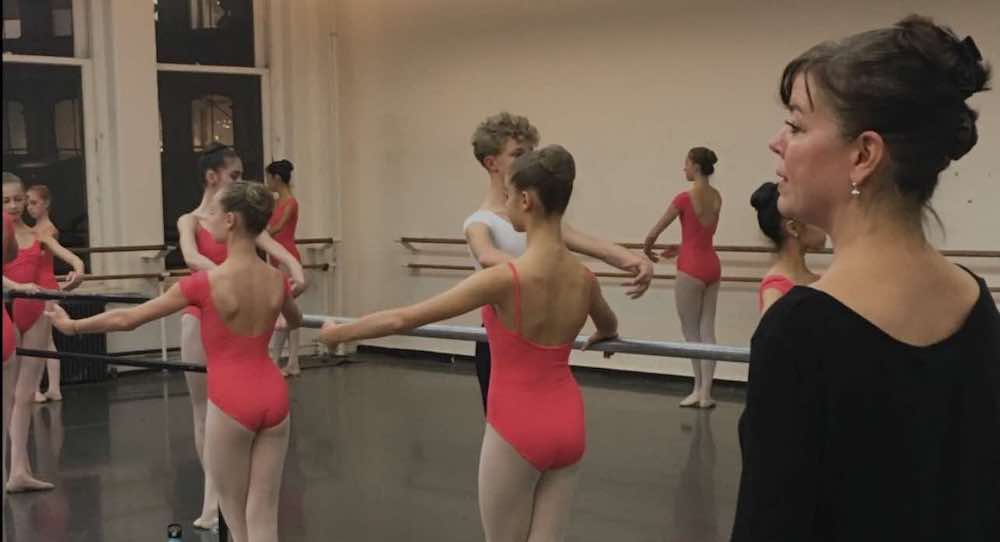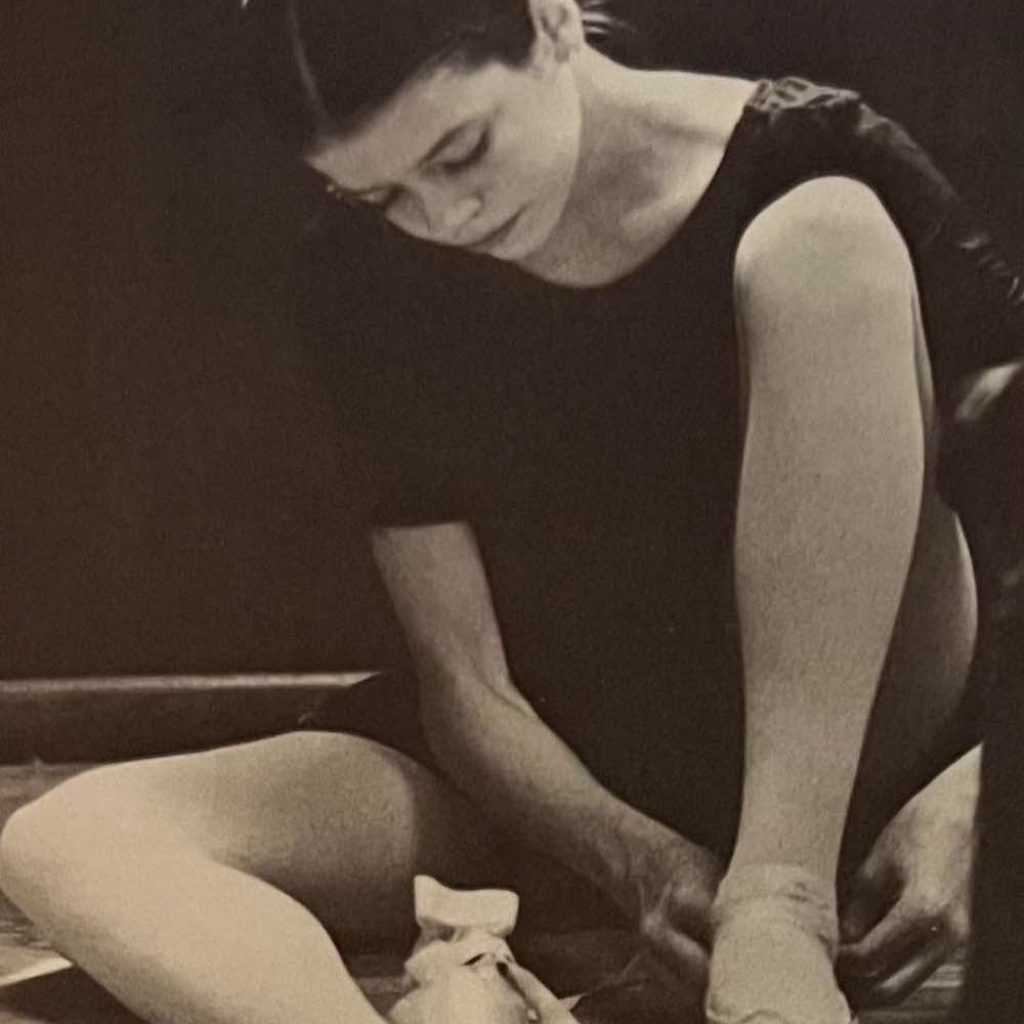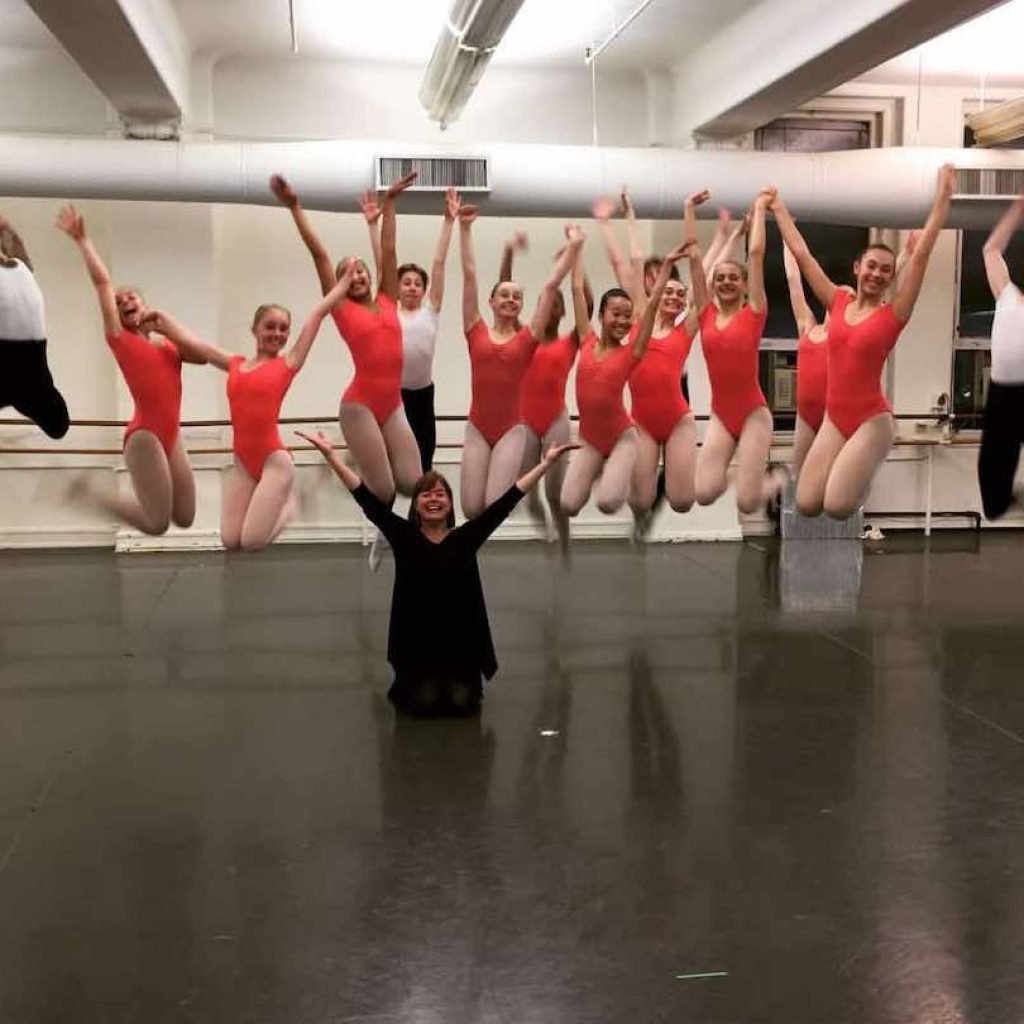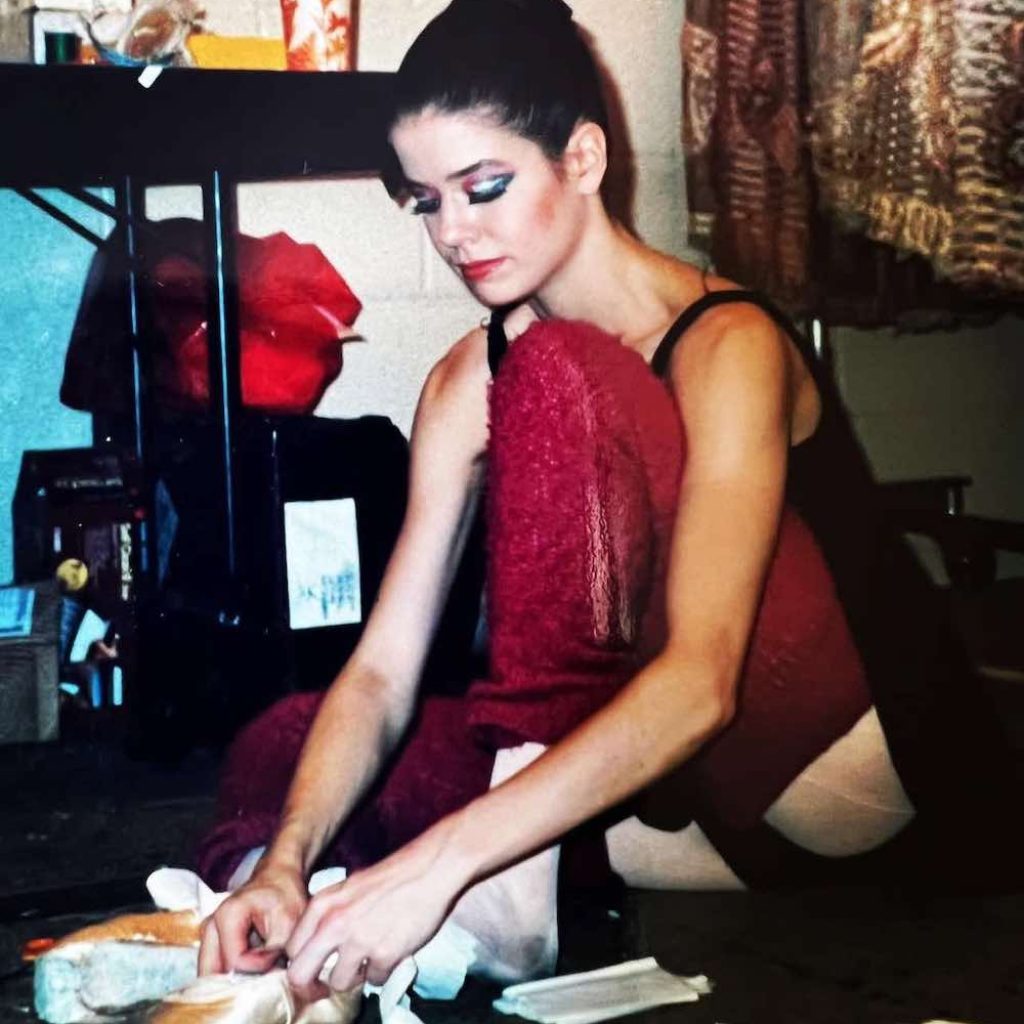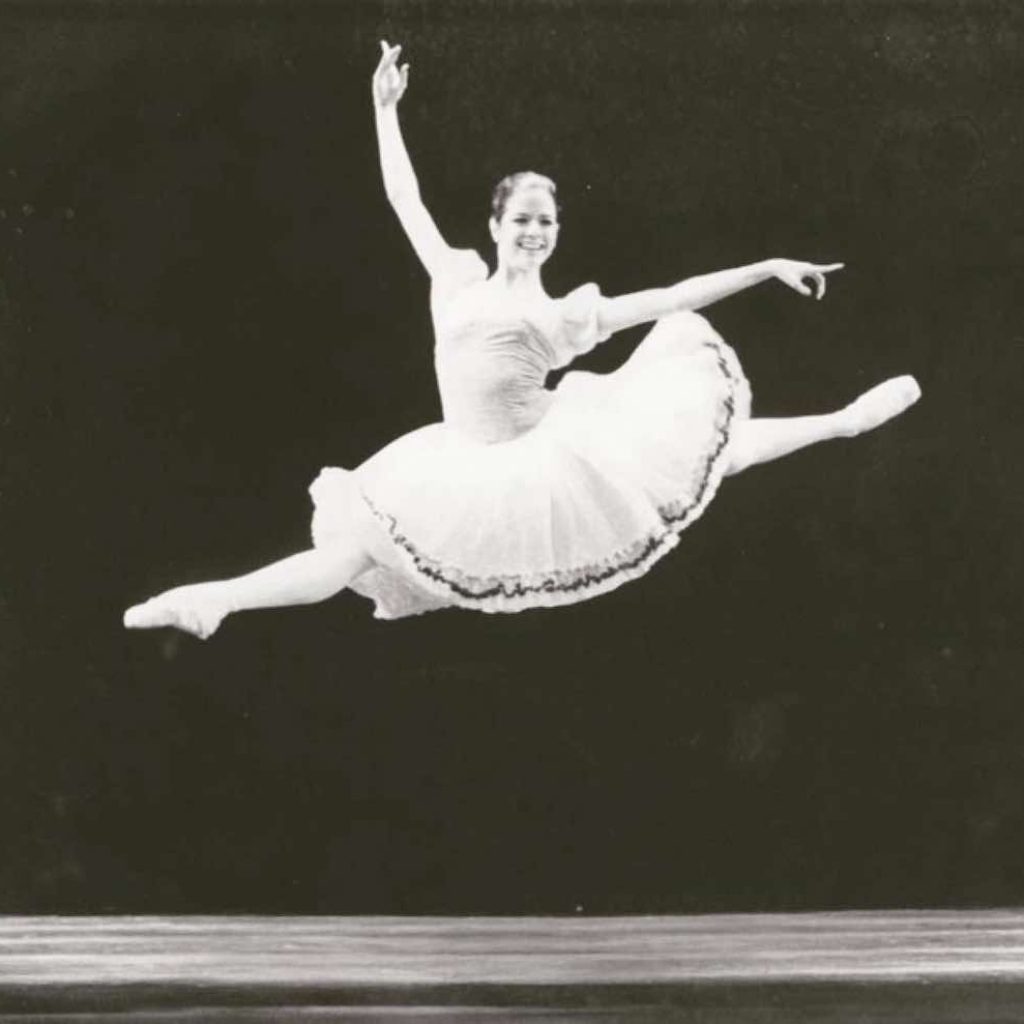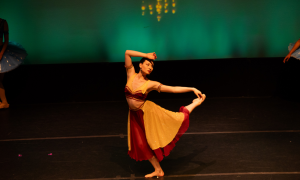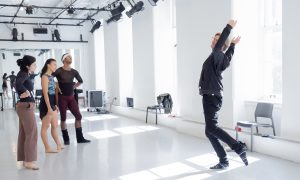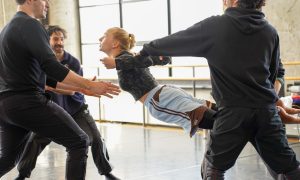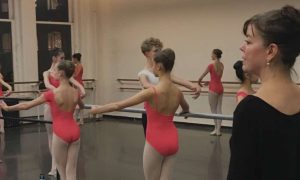For first-timers getting ready for spring concerts, recitals and showcases, the experience can be exciting as well as nerve-wracking. There is a lot to think about — choreography, costumes, makeup, and, for ballet dancers, pointe shoes. Those satin beauties are a whole challenge unto themselves. There are many factors to consider: Are you able to get the exact size, width and strength you need? Do they need to be dyed? What is the performance floor like? Don’t forget all that sewing and breaking in. All students should have their shoes ready for their shows so they can focus on dancing their best.
Elizabeth Ferrell is a former dancer with American Ballet Theatre (ABT), Pennsylvania Ballet, and NYC Opera. She now teaches at the ABT Jacqueline Kennedy Onassis School, as well as ABT and Kaatsbaan summer intensives. She has taught all levels of pointe dancers, from beginning to advanced, following the ABT curriculum. Her current class at ABT/JKO consists of students aged 13-15 who have been en pointe for two to three years and train six days a week. Their studies require pointe work every day and include pointe class, center pointe work, variations or repertory.
That level performs several times a year. In the fall, they dance on stage with the ABT company in the fall gala and work with choreographers like Lauren Lovette and other artists. There is a winter showing for their families in the studios, where they perform variations and repertory pieces en pointe. At the end of the school year, there is a spring performance on stage — this year, it is the classical powerhouse Paquita suite.
Taking them from studio to stage has its unique challenges in regard to pointe shoes. Ferrell likes to start the pieces early so they feel comfortable and confident dancing en pointe. She works on the pieces twice a week in the months before the show, gradually adding more rehearsals as they get closer to stage time. She will change the choreography to make it more age-appropriate for the level if necessary. The winter showcase at the ABT school studios is an informal showing, so the dancers are comfortable with the space. The spring show is in a professional theater, usually the Joyce Theater or NYU Skirball Center.
The school is fortunate to have good Marley flooring, but the warm-up areas often do not have a proper dance floor. She cautions them not to try pirouettes in the hallway and to bring a pair of socks or booties to wear over their pointe shoes when walking around offstage. She warns that the shoes can pick up wax or get dirty, which can make pointe shoes quite slippery. Ferrell says, “In the weeks leading up to the performance, I make sure everyone is considering what kind of shoes are best for their pieces — do they need softer shoes for something like Les Sylphides or Giselle, or harder shoes if they are doing a variation or hops on pointe?”
She advises them to break in their shoes well in advance so they are not wearing brand new shoes onstage for the first time. “I remind them to make sure they have clean shoes, especially if they are dancers who can wear their pointe shoes for a long time.” She emphasizes making sure their ribbons and elastics are clean and stitched on securely. She adds, “I prefer all the ribbons to be uniform, so I suggest that they have to tie the knot (not the super stretchy ribbons that are in one piece), but that is my preference.” She asks her students to always have a small sewing kit with them in case their ribbons or elastics come undone.
One trick she swears by is using a large-eyed needle and dental floss to sew the shoes. “Dental floss is easy to thread and is quite strong — just don’t get the minty green colored kind for the stage!” she quips. There is a trick that many experienced dancers use — cutting the heels out of their tights so that the shoes don’t slide off. “I don’t usually tell my students about cutting the heels out of their tights — I leave that to the professionals. But if they have a shoe that feels like it’s slipping off, I suggest a little rosin (just a little so they don’t get a heel blister).”
Ferrell adds, “One of my biggest rules is to remind them all that ribbons can come undone onstage in costume. We call them rabbit ears, and it does not look professional.” She has her students sew at least a stitch or two in the ribbons they have tucked in. Without the stitches to secure the ribbons, they may come out during a dress rehearsal. “I let them know that anyone whose tucked ribbons come out in the dress rehearsal will hear about it from me on the microphone in the audience! That usually does the trick!”
If she sees ribbons out in their classes, she always says something regarding proper shoe presentation. She does not allow sloppy ribbon tying, insisting that the knots go inside, not outside the ankle bones. She reminds the dancers to tie the shoes lower near the ankles as opposed to high up the legs. Ferrell jokes that it looks like a gladiator’s shoe. In live theater, accidents can happen, but she feels that students should do all they can to look neat and tidy onstage.
For post-performance maintenance, Ferrell instructs her students to let their shoes dry and not stuff them into a bag while they are still sweaty. Traditional pointe shoes will mush out. “Having a mesh bag is good for letting them air out a bit. Also, remember to Jet Glue shoes that have gotten a bit soft overnight so they have time to dry.” She has all of her dancers check their ribbons and elastics after every show to make sure that they are still secure.
Ferrell adds wisely, “Dancing on pointe onstage is fun and a rite of passage for a young dancer. For as long as you continue in ballet, getting pointe shoes ready for rehearsals and performances is an important ritual.” She feels that preparing their shoes in advance is something that even the most famous principal ballerinas do for themselves. The same holds true for any young dancer. “You learn to sew shoes while hanging out with friends or watching TV. It is sometimes tedious, sometimes exhausting, but it’s what we do for love!”
Elizabeth Ferrell teaches open ballet classes at Peridance Center in NYC: www.peridance.com/faculty/elizabeth-ferrell.
By Mary Carpenter of Dance Informa.


